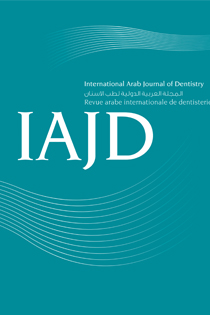Abstract
The purpose of the present study was to investigate the fracture resistance of computer aided endo-crowns versus conventional core-supported computer aided full crowns. Ninety human teeth were collected, 30 for each type (maxillary central incisors, maxillary 1st premolars and maxillary 1st molars). Specimens were divided into 3 groups (n=10) according to restoration used: 1) PC: Post-core and crown; 2) NC: Nayyar core and crown and 3) EC: Endo-crown. Each group was further subdivided into 3 subgroups according to the tooth used: I (Incisor), P (Premolar) and M (Molar). For group PC: Fiber post (Radix, Dentsply Maillefer) were cemented using resin cement (Calibra Dual Cure, Denstply Detrey GmbH). For group NC: 3 mm of gutta percha of every canal was removed. For groups PC and NC, after etching and bonding of root-face, transparent core former (Coltène/ Whaledent) was filled with SDR (Smart Dentine Replacement, Dentsply Detrey GmbH) and inverted onto root-face and cured. All specimens were individually scanned and thermocycled for 1000 cycles then submitted to compression test using universal testing machine (Instron 8874; Instron Corp.) Fracture was confirmed by sudden drop in load readings. Subgroup IPC scored the highest mean among group I and subgroup PNC scored the highest mean among group P. One-Way ANOVA detected significant differences among groups I and M with p< 0.05 in I and M groups. Regarding P group, P-value was > 0.05 indicating no significant differences among group. Endocrown showed the highest fracture resistance means in molars, while Nayyar core and crown showed the highest fracture resistance means in premolars. However, post-core and crown revealed the highest fracture resistance means in incisors.

